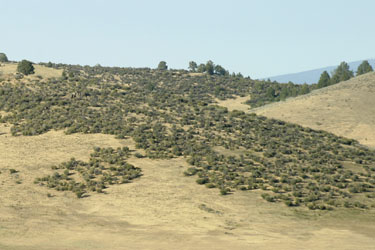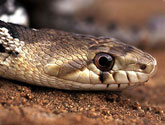
Home |
About Us |
How to Participate |
Biodiversity Modules |
Projects |
Maps |
News |
Resources

Home |
About Us |
How to Participate |
Biodiversity Modules |
Projects |
Maps |
News |
Resources
|
Definition of "Non-Forest" - General Code 600: Vegetated areas without trees. Grasslands, mountain meadows, un-maintained range, clear cuts, as well as young replanted forests with trees less than 15' tall and have less than 26% canopy cover. |
Non-Forest: Disturbed Shrubland (614)
 | Descriptive Habitat Code: This shrubland (6) was recently disturbed (1) by grazing cattle and the area has more than >26% shrub cover (4).
Shrubland - a habitat type dominated by woody shrubs. A shrub is a perennial woody plant that branches at ground level to form several stems. |
 Coyote Canis latrans Code: CALAT Photo: RA |
Distribution and Habitat: It is found in mountainous areas, grasslands, deciduous and mixed coniferous forests and even urban areas. Diet: Interesting fact: |
 Gopher snake Pitouphis melanoleucas catenifer Code: PIME Photo: Chris Brown |
Distribution and Habitat: It is found in mountainous and rocky areas up to an altitude of at least 8000 feet. Diet: Interesting
fact: |
Home |
About Us |
How to Participate |
Biodiversity Modules |
Projects |
Maps |
News |
Resources